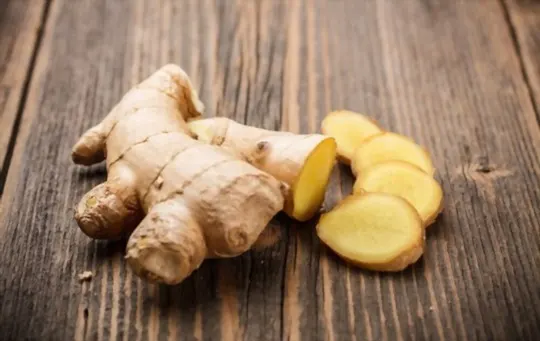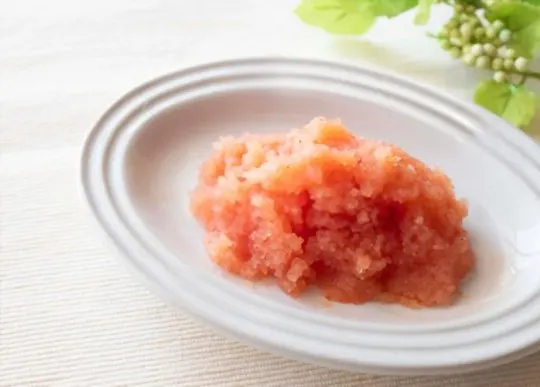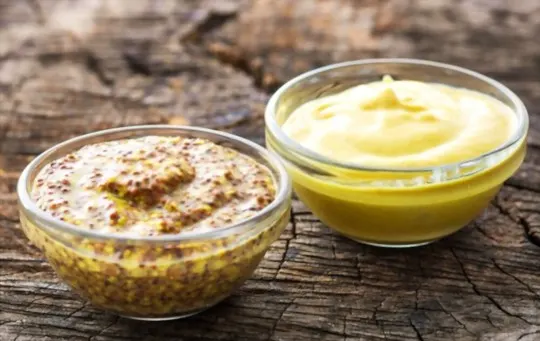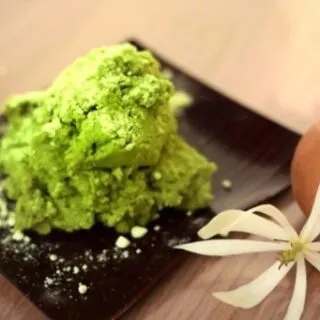Are you struggling to find a delicious replacement for Wasabi? You don’t have to worry anymore.
In this article, we will discuss the best substitutes for Wasabi and how to use them.
So, stay tuned as we explore different alternatives and pick the right one for you.
What is Wasabi?

Wasabi is a root vegetable that is commonly used to make a spicy green condiment commonly served alongside sushi.
It is native to Japan, where it has been harvested for hundreds of years for its unique flavor and medicinal properties.
Wasabi has a strong, sharp flavor compared to hot mustard or horseradish, but it also has nuances of sweetness.
Its taste can best be described as pungent and hot, yet sweet at the same time.
The traditional way to serve wasabi is in a paste form mixed with some water.
It’s also sometimes served as grated or minced fresh wasabi.
The paste form is much more popular due to its convenience and long shelf life, making it perfect for sushi bars and Japanese restaurants all over the world.
The paste can either be made from the fresh root or dried powder form; both are widely available in supermarkets across the globe.
Wasabi adds a flavorful kick to any dish but can be hard to find in some areas of countries outside of Japan.
Fortunately, there are several excellent substitutes that will add similar taste profiles without having to track down the real thing.
Read on for five must-try wasabi alternatives.
5 Best Wasabi Substitutes to Consider
Wasabi is well-known for its sharp, spicy flavor and is commonly served with Asian cuisine.
It can be difficult to find fresh wasabi, as it needs to be cultivated in certain conditions and grown in specific areas.
If you’re unable to purchase and consume real wasabi, here are some substitutes you can consider:
1 – Horseradish

Horseradish (Armoracia rusticana) is a root vegetable that has been used for centuries as a condiment or culinary spice.
It has a strong flavor and pungent aroma that are similar to those of wasabi.
As such, it has long been used as a wasabi substitute in recipes calling for the true Japanese horseradish.
When it’s freshly grated, horseradish can provide the same kick that you would expect from wasabi, though its flavor is somewhat milder.
The root needs to be grated and mixed with some vinegar or mustards for the full effect, but it still comes fairly close to the real thing.
The best way of using horseradish as a substitute for wasabi is to add some additional ingredients like garlic and mustard in order to mimic the flavors more closely.
2 – Ginger

Ginger and wasabi have a lot in common, as they both belong to the same family of plants.
Ginger is also quite spicy, meaning it is a perfect substitute if you’re searching for that same kick of spicy flavor.
Simply ground up some dry ginger root and use it just like you would wasabi paste.
It’s important to note that ginger spice won’t stick around for as long on your palate as wasabi does – you might find the spiciness passes much faster with ginger than with wasabi, so keep that in mind.
Additionally, some people may have an adverse reaction to eating raw ginger, so do a test run before using it in bulk for a dish or recipe.
And lastly, be sure to get fresh or dried/powdered ginger – not pickled.
Pickled ginger will change the flavor drastically and isn’t suitable for this purpose.
3 – Karashi

Karashi (辛子, からし) is a Japanese-style mustard condiment that has its origins in East Asia.
Unlike the similarly named condiment, Kari-Kari, which is a type of horseradish sauce made with wine and vinegar, Karashi is made with dry mustard and vinegar.
Its unique flavor nearly matches the heat of Wasabi and it’s commonly used in Japan to make sushi or rolls.
It also serves as a topping on meats or fish dishes as well as an ingredient in salad dressings, marinades and pickles.
Karashi packs a powerful punch so it is best to use just a few drops or pinches when replacing Wasabi in recipes.
4 – Mustard

Mustard is commonly used to replace real wasabi, especially in Western countries.
It is fairly simple to make a mustard-based substitute for wasabi — just combine prepared yellow mustard with a bit of horseradish, lemon juice and soy sauce.
Some may even add a bit of sugar to sweeten the flavor.
The result is a condiment with a spicy kick that will enhance any dish, just like real wasabi.
However, bear in mind that replacing real wasabi with mustard could alter the intended flavor, as this condiment contains certain elements that differ from traditional Japanese cooking ingredients.
5 – Hot Daikon
Hot Daikon is a root vegetable that, when grated and mixed with other spices, can easily mimic the flavor and texture of wasabi.
The daikon is boiled until tender and cut into small pieces before grinding or grating.
It can be used as a substitute for traditional wasabi in sushi, sashimi, and other dishes where wasabi may normally be served.
When looking for a hot daikon substitute for wasabi, it’s important to select daikon that’s firm to the touch and free from wrinkles or discoloration.
To get the best flavor and texture possible for your dish, use fresh hot daikon when it’s available at the grocery store or buy ground daikon powder online.
Be sure to adjust quantities based on your taste preferences.
Conclusion
In conclusion, wasabi is a pungent green condiment that is served with many Japanese dishes like sushi, sashimi and soba noodles.
It is made from the root of the Wasabia japonica plant, which grows in the mountains of Japan.
If your local grocery store does not carry wasabi, you can try some alternatives such as mustard or horseradish.
However, these substitutes don’t have the same flavor as real wasabi.
If you want to try out true wasabi flavor without going to a specialty shop, you can buy prepared wasabi paste or powdered mix for making your own at home.

5 Best Wasabi Substitutes to Consider
Ingredients
- 1 – Horseradish
- 2 – Ginger
- 3 – Karashi
- 4 – Mustard
- 5 – Hot Daikon
Instructions
- Choose your preferred substitute from the list of options.
- Organize all of your ingredients.
- Use the proper substitute to cook your recipes.

Carrie is a food writer and editor with more than 15 years of experience. She has worked for some of the biggest names in the food industry, including Bon Appétit, Food & Wine, and Martha Stewart Living.
As the Editor in Chief of IntroChicago.com, Carrie oversees all of the content on the site. She also manages the team of contributing writers and editors, who help to create delicious recipes, helpful tips, and informative articles that you’ll find on the site.
A native of the Chicago area, Carrie is passionate about all things food. She loves trying new restaurants and experimenting with new recipes in her kitchen. She’s also a graduate of the Culinary Institute of America, so she knows a thing or two about food!
